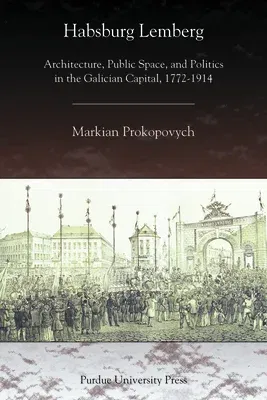Markian Prokopovych
(Author)Habsburg Lemberg: Architecture, Public Space, and Politics in the Galician Capital, 1772-1914Paperback, 1 September 2008

Qty
1
Turbo
Ships in 2 - 3 days
In Stock
Free Delivery
Cash on Delivery
15 Days
Free Returns
Secure Checkout
Part of Series
Central European Studies
Print Length
357 pages
Language
English
Publisher
Purdue University Press
Date Published
1 Sep 2008
ISBN-10
1557535108
ISBN-13
9781557535108
Description
Product Details
Author:
Book Format:
Paperback
Country of Origin:
US
Date Published:
1 September 2008
Dimensions:
22.61 x
14.99 x
2.54 cm
ISBN-10:
1557535108
ISBN-13:
9781557535108
Language:
English
Location:
West Lafayette, IN
Pages:
357
Publisher:
Series:
Weight:
544.31 gm

